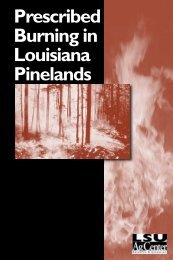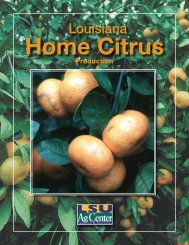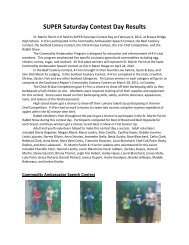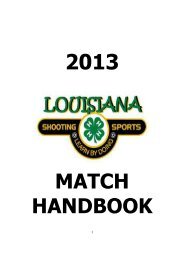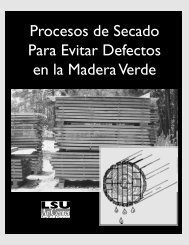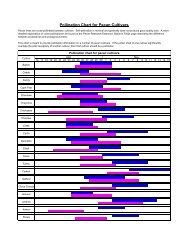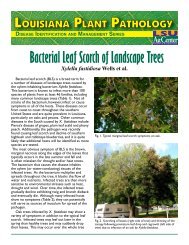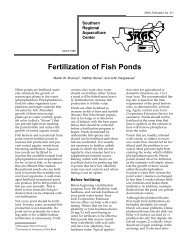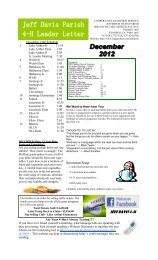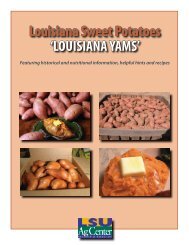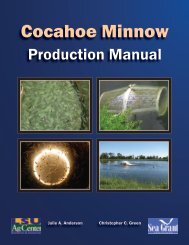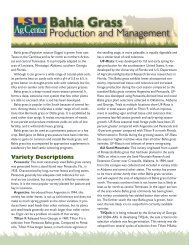Best Management Practices Parasite Control in Beef Cattle
Best Management Practices Parasite Control in Beef Cattle
Best Management Practices Parasite Control in Beef Cattle
Create successful ePaper yourself
Turn your PDF publications into a flip-book with our unique Google optimized e-Paper software.
o Drylot for 24‐48 hours<br />
o Turn out onto contam<strong>in</strong>ated pasture<br />
Cull “poor doers”<br />
o They may not be as resistant to parasites as cattle that ma<strong>in</strong>ta<strong>in</strong> themselves under the same<br />
management system<br />
Use and store products properly<br />
o Avoid generics unless there are data to prove their efficacy<br />
o Dose adult cows with dose for heaviest cow<br />
o Dose calves with dose for heaviest calf<br />
o Don’t store products at the process<strong>in</strong>g area<br />
• Follow label directions for storage<br />
o Seek advice from a veter<strong>in</strong>arian to select the right product for right time of year and right age of<br />
animal<br />
Keep refugia<br />
o Avoid deworm<strong>in</strong>g all animals before turnout onto clean pastures<br />
• This is especially critical with macrocyclic lactones and other long‐act<strong>in</strong>g products<br />
• For example<br />
In cow/calf operation, don’t deworm cows 5 years old and over as older cows<br />
then have refugia and younger, more susceptible cattle are dewormed<br />
o Avoid deworm<strong>in</strong>g older cows go<strong>in</strong>g <strong>in</strong>to summer<br />
• Deworm<strong>in</strong>g comb<strong>in</strong>ed with environmental impact on pasture larvae elim<strong>in</strong>ates<br />
Ostertagia refugia<br />
o For replacement heifers where deworm<strong>in</strong>g the whole group may be desirable<br />
• Turn out onto contam<strong>in</strong>ated pasture follow<strong>in</strong>g deworm<strong>in</strong>g<br />
o Avoid keep<strong>in</strong>g replacement heifers that have all been dewormed and then put on clean pasture<br />
for graz<strong>in</strong>g<br />
• They will likely have only resistant parasites <strong>in</strong> the gut<br />
• If unavoidable, treat like new herd additions above<br />
o Avoid us<strong>in</strong>g the same pastures for young stock year after year<br />
• For example, don’t raise replacement heifers <strong>in</strong> the same pasture year after year – move<br />
the “heifer pasture” around on the ranch<br />
o For stocker calves where deworm<strong>in</strong>g the whole group may be desirable<br />
• Avoid permanent pastures used only for young stock comb<strong>in</strong>ed with long‐act<strong>in</strong>g<br />
products<br />
This is certa<strong>in</strong> to produce an almost pure anthelm<strong>in</strong>tic resistant population of<br />
parasites over time<br />
• If long‐act<strong>in</strong>g products are used, all stockers should go to feedyards for eventual<br />
harvest, and pastures should be tilled, used for hay or left fallow for several months<br />
Do not br<strong>in</strong>g replacement heifers back to a cow/calf operation from this type of<br />
graz<strong>in</strong>g system



